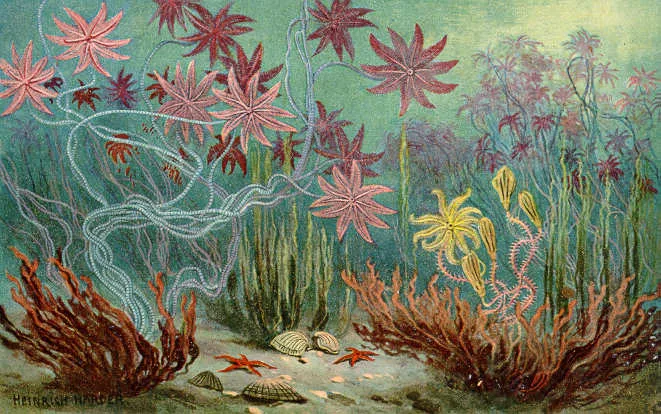Sea Lilies

Though they largely live in the deep ocean today, during the Cambrian through the Permian, crinoid forests covered parts of the seafloor. Known as sea lilies for their beautiful, feathered arms, these creatures are cousins of modern sea stars and sea urchins. When they grew in dense groups they created a protected, diverse ecosystem for other creatures to call home. But unlike the trees that make up the forests on land, crinoids are not plants. The invertebrates feed by catching drifting particles in their many arms. In a forest full of crinoids, competition for food was tough, so they evolved a variety of stalk heights which enabled them to capture food at different levels above the seafloor. The base of their stalks was modified to anchor the animal securely in the soft sediment. Crinoids were relative skyscrapers in the community, sometimes towering at heights of up to two meters (6.5 feet). In a crinoid community, lacy bryozoans occupied a lower level. Below them, huge numbers of brachiopods monopolized the muddy bottom. By the Permian, sharks cruised above these crinoid forests, while smaller bony fishes and shelled cephalopods weaved among the crinoid stalks.

